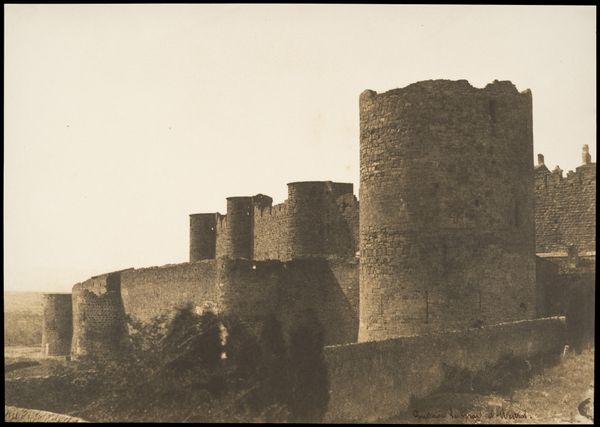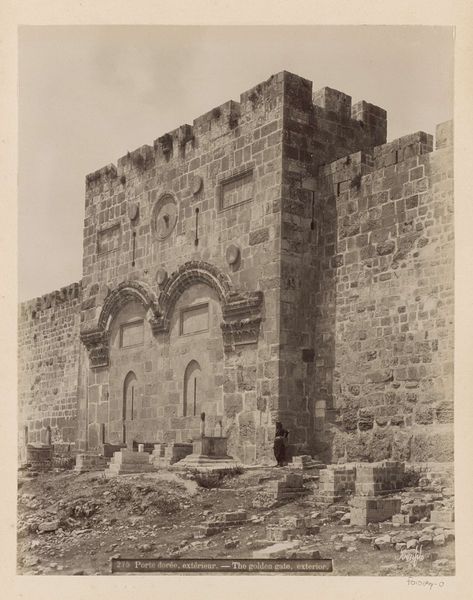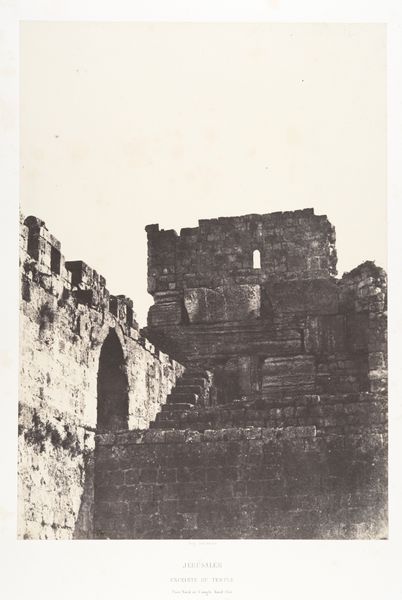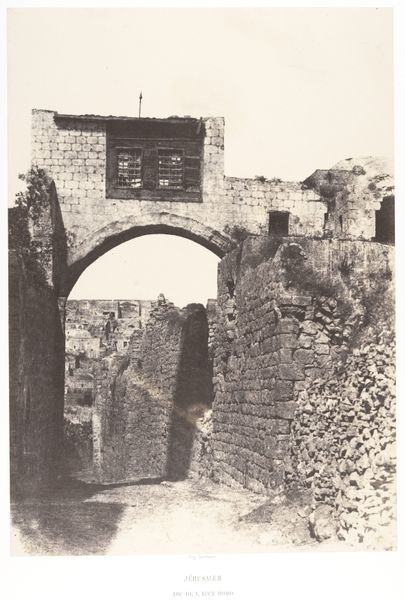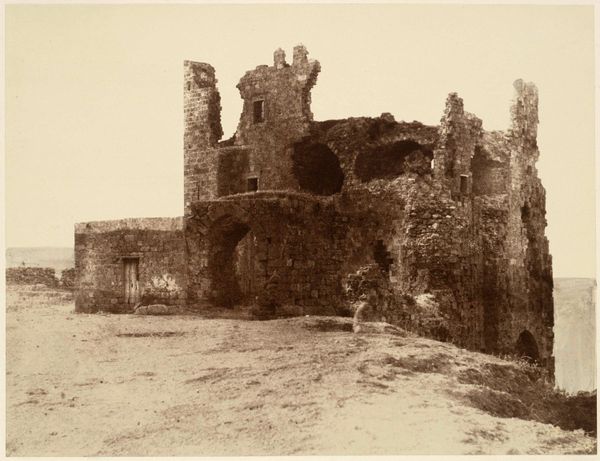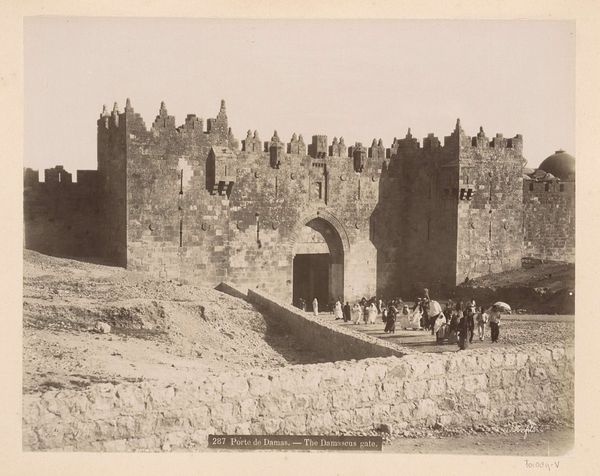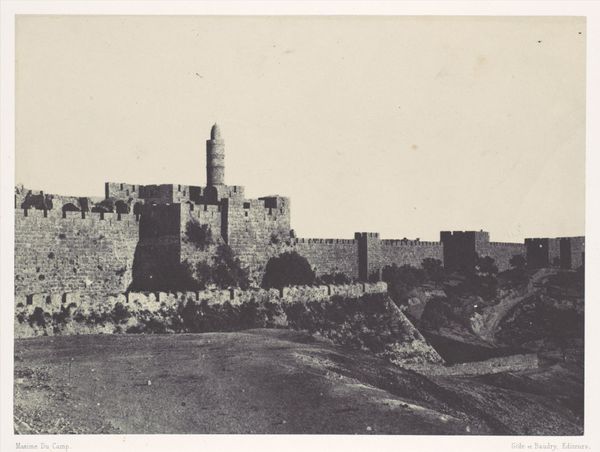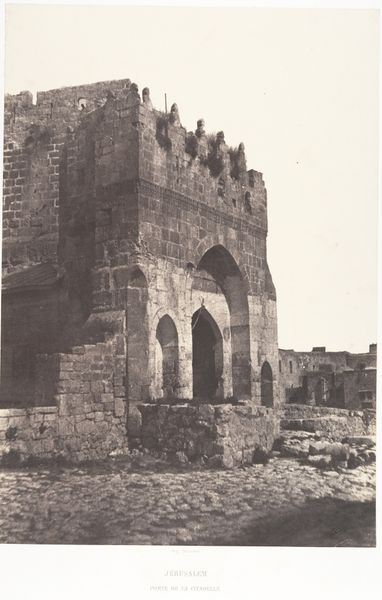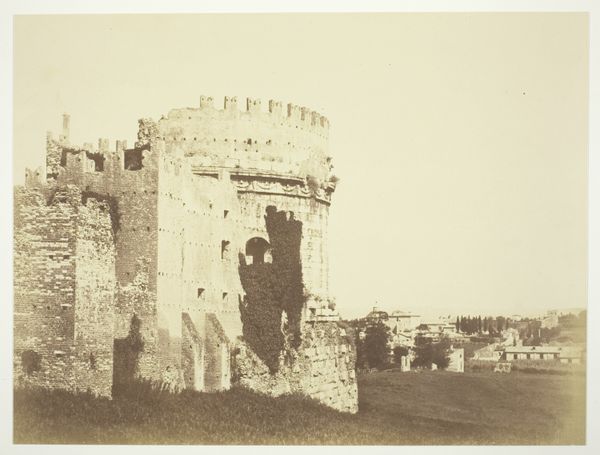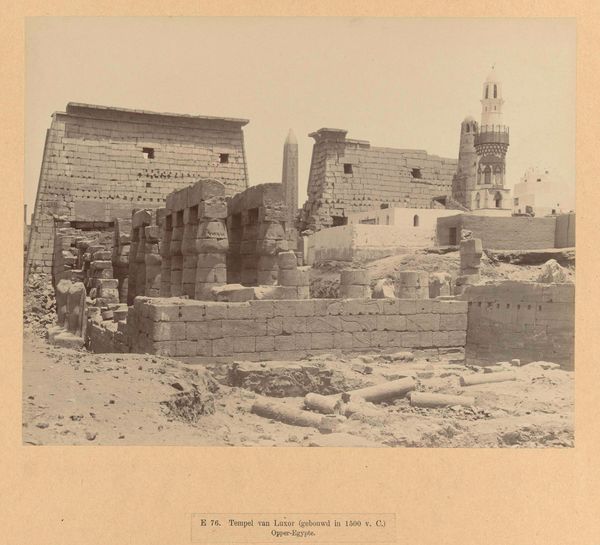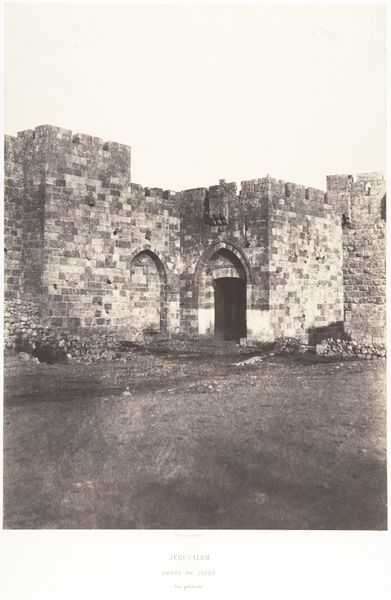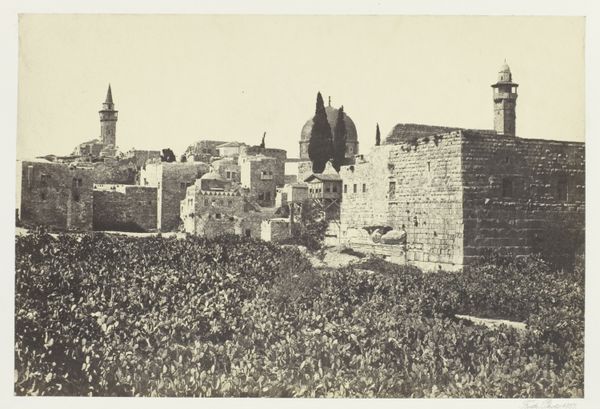
Torens van David en Hippicus in Jeruzalem, gezien over daken c. 1867 - 1895
0:00
0:00
photography
#
landscape
#
photography
#
19th century
#
cityscape
#
islamic-art
Dimensions: height 223 mm, width 283 mm
Copyright: Rijks Museum: Open Domain
Curator: Let’s examine this photographic print from between 1867 and 1895, entitled "Towers of David and Hippicus in Jerusalem, Seen Over Roofs," captured by the studio of Maison Bonfils. The sepia tones immediately lend it an aura of aged grandeur. Editor: It gives an initial feeling of solemnity. There’s a palpable sense of permanence and yet also vulnerability about these stone structures rising from the tightly packed buildings below. The print captures an urban palimpsest, a kind of visual record of overlapping historical narratives imprinted upon the landscape. Curator: Absolutely. Note how Bonfils has structured the composition. The geometrical exactitude in the photograph creates a compelling rhythm through line and form. The stark contrast between light and shadow models the architectonic forms, defining their spatial dimensions, revealing their age and state of erosion. Editor: Indeed. And consider those towering presences—the minarets set against the muted sky are not merely structural but also symbolically charged. In nineteenth-century depictions of Jerusalem, the interplay of architectural forms served as statements about colonial power and cultural difference. What were Bonfils’ intentions, I wonder? Curator: The beauty of the piece is also located in how it avoids becoming simply ethnographic. Instead, the photograph seems intensely invested in its visual impact. The way the photographer captures this play of architectural features—the towers, archways, rooftops—allows us to read it structurally, decoding layers of intentionality through careful juxtaposition and photographic processing. Editor: The crumbling stone serves not only as texture but as testament to the historical struggles over sacred and secular spaces. Here we find a poignant view into how identity and power were materially manifested in cityscapes that came to define colonial relationships. One wonders who the image was aimed towards; travelers looking for adventure or people looking for religious affirmation of the "Holy Land". Curator: The lasting impression for me centers on how the Bonfils studio crafted an intriguing study in contrasts and continuities between mass and space. A close analysis also demonstrates how such historical materials can be revisited today with new criticality and intellectual rigour. Editor: Ultimately, I'm left contemplating how our visual interactions shape and mediate histories and enduring struggles for visibility, for dignity, for justice in places such as Jerusalem that are so symbolically important, and historically fraught.
Comments
No comments
Be the first to comment and join the conversation on the ultimate creative platform.
